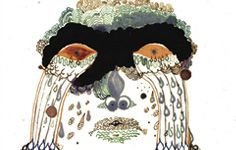I don’t remember the actual song, only the abject melancholy that flooded through me upon hearing Rogers’ spare guitar and soulful baritone waft over the crowd of happy, paint-faced children, batik peddlers, and poutine eaters wandering amid the waving tulips. No one else seemed particularly bothered by the dissonance between song and scene, but all I wanted to do was escape down to the riverbank and weep.
It wasn’t the first, nor last, time a piece of randomly encountered music would ambush me, and amplify my sadness, almost unbearably. Once, it was the mournful saw of violins accompanying a video at the Canadian Museum of Civilization about early logging. Or it could be a Rufus Wainwright song sneaking up on me from the car radio. I soon became hypervigilant at recognizing that first down spiral of mood, and adept at the quick lunge for the off button. Music, once a comfort and a source of pleasure, had become a minefield.
Soon I stopped fearing music, maudlin TV commercials, and Animal Planet programs about cruelty to chimpanzees. I was still able to feel sadness, but I was not so overwhelmed by the emotion. And I became curious; exactly what was going on in my brain to make me so vulnerable to music in the first place — and why was a pill able to change all that?
Antidepressants, we know, affect the activity of neurotransmitters such as serotonin, dopamine, and norepinephrine, and hormones such as oxytocin, all of which are involved in the experience of pleasure. These are the hormones that become seriously impaired when a person is depressed. But what is the specific link — if it exists — between mood and musical expression? Searching for answers, I turned first to the neuroscience of music, a thriving field of research that has spawned two current bestsellers — Oliver Sacks’ Musicophilia: Tales of Music and the Brain, a collection of strange tales about the human relationship to music, and Daniel Levitin’s This Is Your Brain on Music: The Science of a Human Obsession, which details recent neurological findings. Among them: what’s happening in the brain when music uplifts us; why bits of music can lodge in the brain (the dreaded “earworm” or “tune cootie”); and theories of how and why music — in all its pitches, tempos, keys, and rhythms — has played an integral role in the evolution of the human species.
Levitin is a psychology professor who runs the Laboratory for Music Perception, Cognition, and Expertise at McGill University. Before becoming a psychologist, he was a session musician, sound engineer, and record producer for the likes of Stevie Wonder and Blue Öyster Cult. When I call him on the phone, he sits down at the piano in his Montreal home and plays a riff of trilling high notes, followed by a slow series of notes lower down the scale. It makes the obvious point, that what we think of as sad music tends to be quieter, lower, and slower, with longer duration in tones and a darker timbre than “happy” music. But why one person listening to such music would recognize, but not necessarily feel, the emotion of sadness, while another is consumed by it remains a difficult question to answer. “The relationship between art, creativity, and mental illness is not easily reduced to brain parts,” Levitin admits. “There’s a messiness to emotions, [and] I’m not sure I’m willing to say that it’s a disorder — that someone who is deeply moved by music needs to take a pill.”
He goes on to quote a conversation he recently had with Joni Mitchell. “I said I’d had a difficult period with some colleagues and had found it hard to control my emotions, to which she said, ‘Why the hell would you want to do that?’ For an artist like Joni, the whole point is to be completely in touch with the volatility of emotions.” Stevie Wonder once told him that “he often couldn’t finish a take, because he’d be on the verge of tears. I don’t think that’s a bad thing.” Artists offer consolation, Levitin says. “It’s like you’ve been cut off from your emotions, and suddenly there’s another person feeling what you want to feel. They’re on the cliff edge with you, and, more than that, they’ve taken their despair and turned it into a beautiful piece of art. It’s inspiring.”
In Musicophilia, neurologist Sacks praises music’s ability to restore pleasure and feeling to those numbed by grief, and recounts how, after the death of a beloved aunt, he couldn’



